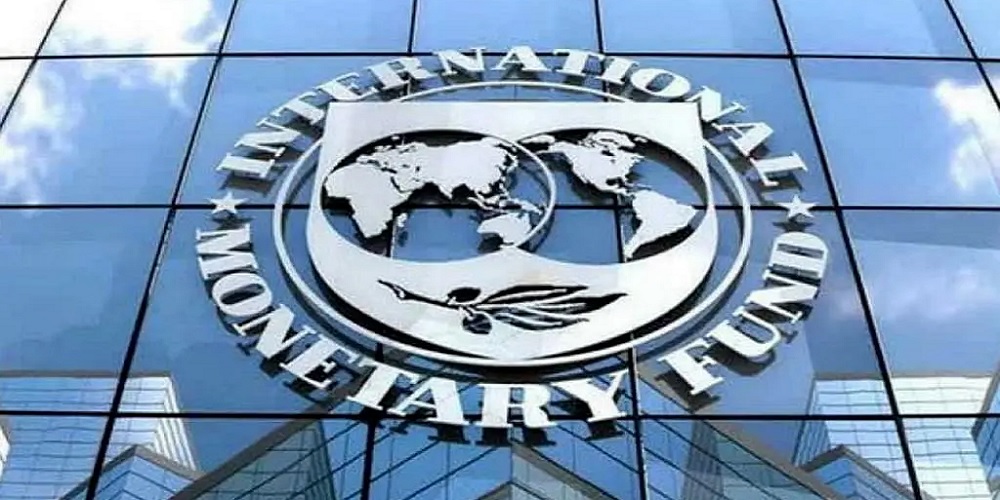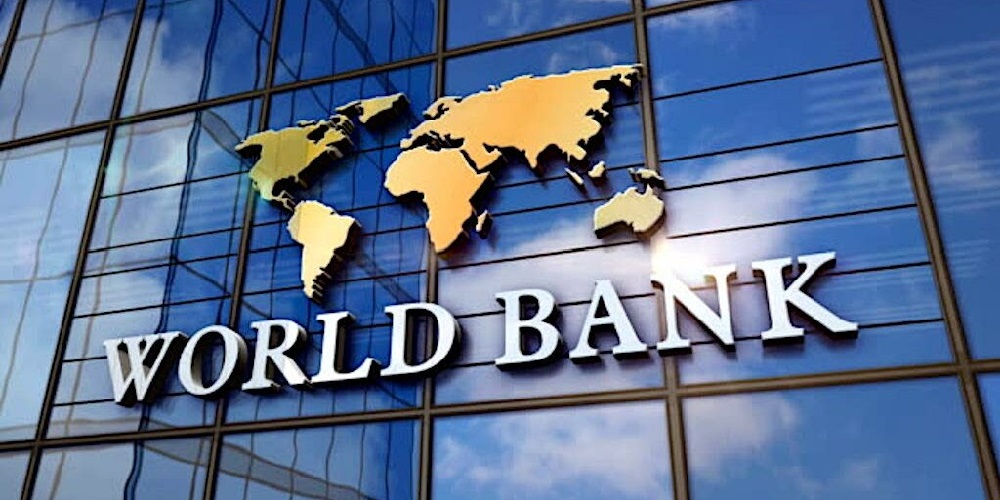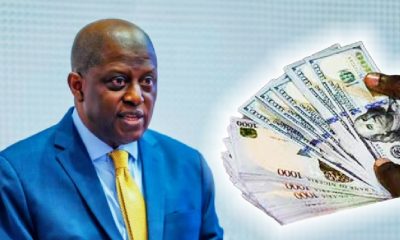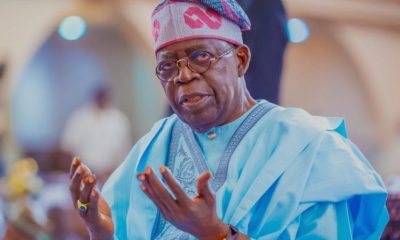Economy
Nigeria’s economy to hit $1.85trn by 2029 – IMF

The International Monetary Fund (IMF) has projected Nigeria’s economy will rise to at least $1.85 trillion in purchasing power parity terms by 2029.
PPP is a metric used to compare the value of different currencies and their ability to buy the same things. It is used for comparing economic productivity and standards of living between countries.
The prediction by the Washington-based institution suggests a significant growth trajectory for Nigeria’s economy over the next five years.
According to data compiled by the IMF, Nigeria’s gross domestic product in PPP terms has been on the increase and is projected to rise from $1.44 trillion in 2024 to $1.85 trillion in 2029.
In 2025, the country’s gross domestic product (GDP) in PPP terms is projected to stand at $1.52 trillion and increase to $1.58 trillion in 2026.
IMF projected the growth will continue in 2027 to $1.67 trillion, and $1.75 trillion in 2028.
The data shows a consistent growth trend, with a notable increase of 5.5 percent expected in 2029.
IMF also forecasted Nigeria’s share of global GDP based on PPP to reach 0.78 percent by 2029.
This represents a slight increase from 0.77 percent in 2023, indicating a steady growth trajectory for the country’s economy.
Nigeria’s purchasing power has declined due to the high cost of living and soaring inflation.
The inflation rate has been on an upward trend rising from 22.41 percent in May 2023 to 33.69 percent in April 2024, while food inflation has climbed to 40.53 percent from 24.82 percent within the same period.
In the past one year, the GDP growth rate has experienced fluctuations.
In the second quarter (Q2) of 2023, GDP was 2.51 percent (year-on-year) in real terms, falling below the 3.54 percent reported in the same quarter the previous year.
In Q3 last year, the GDP grew by 2.54 percent (year-on-year) in real terms, higher than the 2.25 percent recorded in the third quarter of 2022.
However, in Q4 2023, the GDP growth rate stood at 3.46 percent (year-on-year) in real terms, compared to the 3.52 percent recorded in the corresponding period in 2022.
The fluctuation in growth movement continued in Q1 2024, as the GDP growth rate was 2.98 percent (year-on-year) in real terms, relative to the 2.31 percent recorded in the first quarter of 2023.
Economy
75.5% of rural Nigerians now live below poverty line — World Bank

The World Bank has disclosed that a staggering 75.5 per cent of rural Nigerians are now living below the poverty line, reflecting deepening hardship in the country’s hinterlands.
This was revealed in the Bank’s April 2025 Poverty and Equity Brief for Nigeria, which paints a grim picture of worsening economic hardship, widening inequality, and persistent underdevelopment across much of the nation.
While poverty is widespread among urban populations, the report emphasised that the situation is significantly worse in rural areas, where economic stagnation, high inflation, and insecurity have exacerbated living conditions.
“Based on the most recent official household survey data from Nigeria’s National Bureau of Statistics, 30.9 per cent of Nigerians lived below the international extreme poverty line of $2.15 per person per day in 2018/19 before the COVID-19 pandemic,” the report stated.
The report also highlighted Nigeria’s enduring regional disparities. “Nigeria remains spatially unequal. The poverty rate in northern geopolitical zones was 46.5 per cent in 2018/19, compared with 13.5 per cent for southern ones. Inequality measured by the Gini index was estimated at 35.1 in 2018/19.
“Nigeria’s Prosperity Gap — the average factor by which individuals’ incomes must be multiplied to attain a prosperity standard of $25 per day for all — is estimated at 10.2, higher than most peers.”
Despite successive policy interventions, these figures underscore a persistent economic divide across the country.
The report’s demographic analysis found that children aged 0 to 14 years had a poverty rate of 72.5 per cent, reflecting the scale of deprivation among the youngest segment of the population.
Gender disparities were also observed, with 63.9 per cent of females and 63.1 per cent of males classified as poor under the $3.65 per day lower-middle-income threshold.
Education emerged as a significant determinant of poverty, with Nigerians lacking formal education experiencing a poverty rate of 79.5 per cent. This contrasts with 61.9 per cent for those with primary education and 50.0 per cent for secondary school graduates. Only 25.4 per cent of those with tertiary education were considered poor.
The report also drew attention to multidimensional poverty indicators, which further reflect widespread deprivation.
According to the World Bank, about 30.9 per cent of Nigerians live on less than $2.15 daily, 32.6 per cent lack access to limited-standard drinking water, 45.1 per cent do not have limited-standard sanitation, and 39.4 per cent have no electricity.
Education access remains a challenge, with 17.6 per cent of adults yet to complete primary education, and 9.0 per cent of households reporting at least one school-aged child not enrolled in school.
The report noted that even before the COVID-19 pandemic, efforts to reduce extreme poverty had largely stalled.
“Before COVID-19, extreme poverty reduction had almost stagnated, dropping by only half a percentage point annually since 2010. Living standards of the urban poor are hardly improving, and jobs that would allow households to escape poverty are lacking,” the report read.
Although the World Bank acknowledged recent economic reforms aimed at stabilising Nigeria’s macroeconomic outlook, it warned that persistently high inflation continues to undermine household purchasing power, particularly in urban areas where incomes have not kept pace with rising costs.
In light of the worsening situation, the Bank called for urgent policy action to shield vulnerable groups from inflationary shocks and to drive job creation through more productive economic activities.
Economy
Naira Records Marginal Decline Against Dollar at Official Market

The Nigerian naira experienced a mild drop in value on Friday, closing at ₦1,602.18 per dollar in the official foreign exchange market, based on figures released by the Central Bank of Nigeria (CBN).
This marks a decrease of ₦5.49 from the rate of ₦1,596.69 recorded on April 30, the last trading day before the May 1 Workers’ Day holiday—indicating a depreciation of approximately 0.34%.
Earlier in the week, from Monday to Wednesday, the naira remained relatively stable, exchanging at ₦1,599.95, ₦1,599.71, and ₦1,596.69 respectively.
Although the local currency showed some consistency mid-week, it wrapped up the week with a loss, following a sligh dip of 0.02% at the beginning of the week
Economy
Black Market Dollar hits N1,610 Amid Economic quagmire

What is the Dollar to Naira Exchange Rate in the Black Market (Also Known as the Parallel Market or Aboki FX)?
Below is the black market exchange rate for the U.S. dollar to the Nigerian naira as of Thursday, May 1, 2025. These are the typical rates at which you can exchange dollars for naira:
Dollar to Naira Black Market Exchange Rate (May 1, 2025):
At the Lagos Parallel Market, also referred to as the black market, Bureau De Change (BDC) operators are buying dollars at ₦1,602 and selling at ₦1,610, according to market sources.
Please note: The Central Bank of Nigeria (CBN) does not recognize or endorse transactions conducted on the parallel market. The CBN advises individuals and businesses seeking foreign exchange to use official banking channels.
-

 News20 hours ago
News20 hours agoVDM: Release my guy now, singer Davido tells EFCC
-

 Economy10 hours ago
Economy10 hours ago75.5% of rural Nigerians now live below poverty line — World Bank
-

 News19 hours ago
News19 hours agoFormer Plateau deputy governor is dead
-

 News10 hours ago
News10 hours agoMassive turnout as Bishop David Abioye holds first service in new church + Video
-

 News20 hours ago
News20 hours ago“I’m not thinking of a third term agenda -Trump
-

 News10 hours ago
News10 hours agoHow US-Based Yoruba Monarch Died After Brutal Assault In Oyo Palace, Allegedly Ordered By Alaafin Amid Supremacy Row With Ooni Of Ife
-

 Opinion24 hours ago
Opinion24 hours agoCBN 2024 financial performance an indicator Cardoso’s twerking yielding results
-

 News2 hours ago
News2 hours agoTinubu to meet Gencos over N4tn electricity debt






